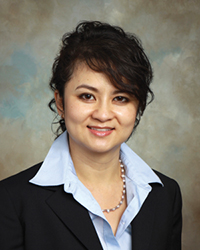Posted on Sep 30, 2016 in
FOCUS ON THE CURE

Liz Thu Ha Lee, MD, FACS
Breast Surgeon
Memorial Hermann
In men, breast cancer is a rare disease, accounting for less than one percent of cases. According to the American Cancer Society, about 2,600 men will be diagnosed this year in the United States, compared to an estimated 246,660 new cases of invasive breast cancer expected in women, along with 61,000 new cases of in situ breast cancer.
Last year, a 54 year-old patient was among the men surprised with a diagnosis of breast cancer. “I noticed a lump on the left side of my chest and thought it was a pulled muscle, because I’d been working out the week before,” said the patient. “When it didn’t go away, I went to my primary care physician, who ordered an ultrasound and mammogram, both of which came back inconclusive.”
Given his family history of cancer, including a mother with breast cancer, grandmother with stomach cancer and various male relatives with prostate cancer, his doctor referred him to Liz Thu Ha Lee, MD, FACS, a breast surgeon affiliated with Memorial Hermann.
Fortunately, the patient’s slow-growing cancer was caught early at Stage 2B, between two and five centimeters, but it had spread to a lymph node. Lee quickly assembled a team and began to formulate his treatment plan. According to Lee, radiation and chemotherapy are the same for men or women. What differs are the types of surgery and hormonal drugs used post-surgery to cut risks of recurrence. Lumpectomies are also rare for men. “Because men’s breasts are so small, it’s hard to get sufficiently wide margins around the tumor,” Lee said.
The patient and his team chose to remove both breasts and all 21 lymph nodes in the arm pit and chest. “Prophylactic mastectomies have not been proven medically to raise survival rates, but it gives some patients more peace of mind,” Lee said.
Due to scarred and stiff tissues from surgery and radiation, the patient experienced limited mobility in his left arm. He also faced lymphedema, the lifetime risk of tenderness and swelling due to damage to the lymphatic drainage during radiation and lymph node removal. Lee referred him to TIRR Memorial Hermann for cancer rehabilitation. “Physical and occupational therapy is vital,” Lee said. “It improves patients’ mobility and recovery time and shows what exercises prevent lymphedema and stiffness in joints that can occur after surgery and radiation.”
TIRR therapists helped the patient restore his range of motion, flexibility and strength and taught him how to treat and prevent fluid buildup with massage, exercise and compression garments. Unlike chemo and radiation, the twice-weekly, one-hour sessions at TIRR Memorial Hermann over two months “wasn’t something I dreaded,” he said. “It was a learning experience each time.”
Having a disease identified with women meant the literature was geared to female breast cancer and “the only survivors I could talk to were women,” the patient said. “But my doctors and their teams made sure I understood exactly what I’d experience. They answered questions before I asked. They were absolutely fabulous.”
Now, he is passionate about informing men about breast cancer. “If women find something wrong, they go right in to see the doctor, but men don’t,” he said. “We wait. It’s like asking for directions. Women, on the other hand, are incredibly proactive. When I found the lump, my attitude was this is nothing – it will go away. My advice to men is to act fast if you see something unusual on your body. Don’t take it lightly. We never think breast cancer will happen to us, but it can.”
TIRR is a registered trademark of TIRR Foundation.

 <
<







